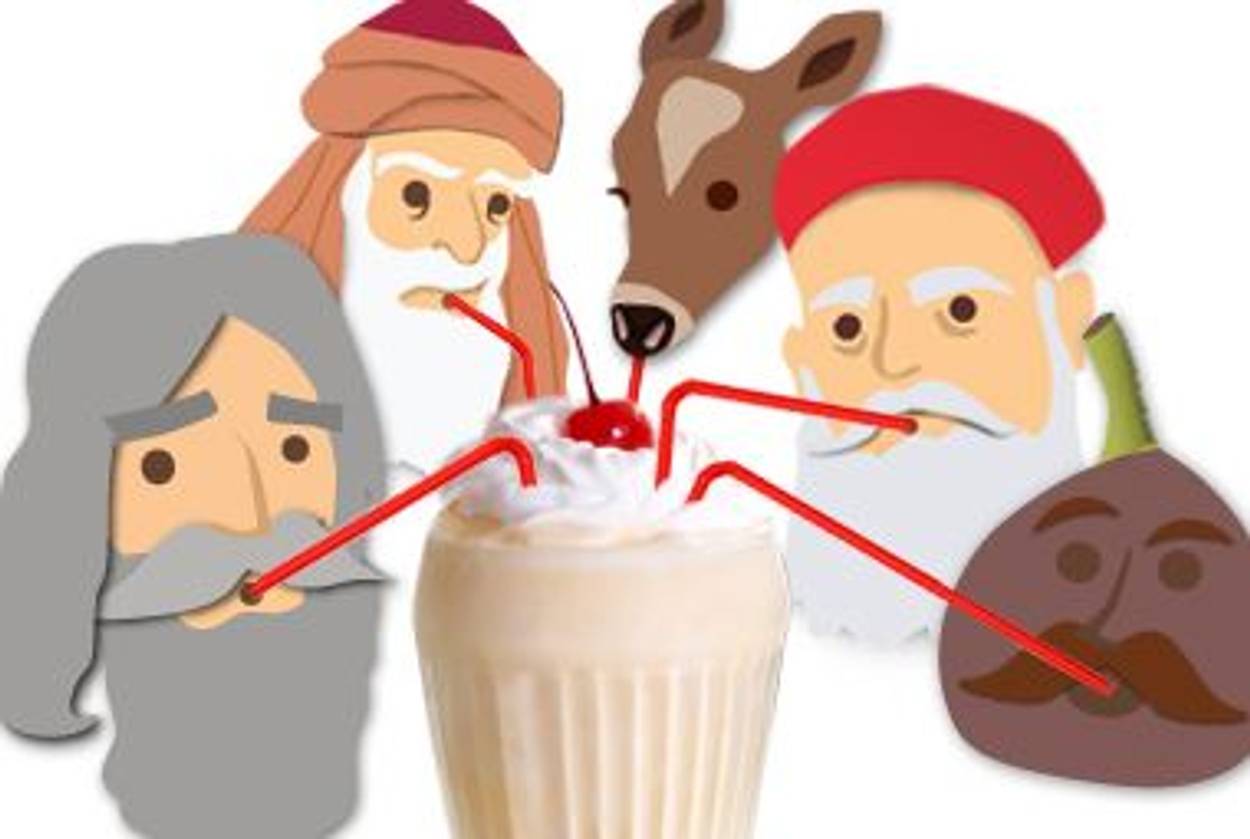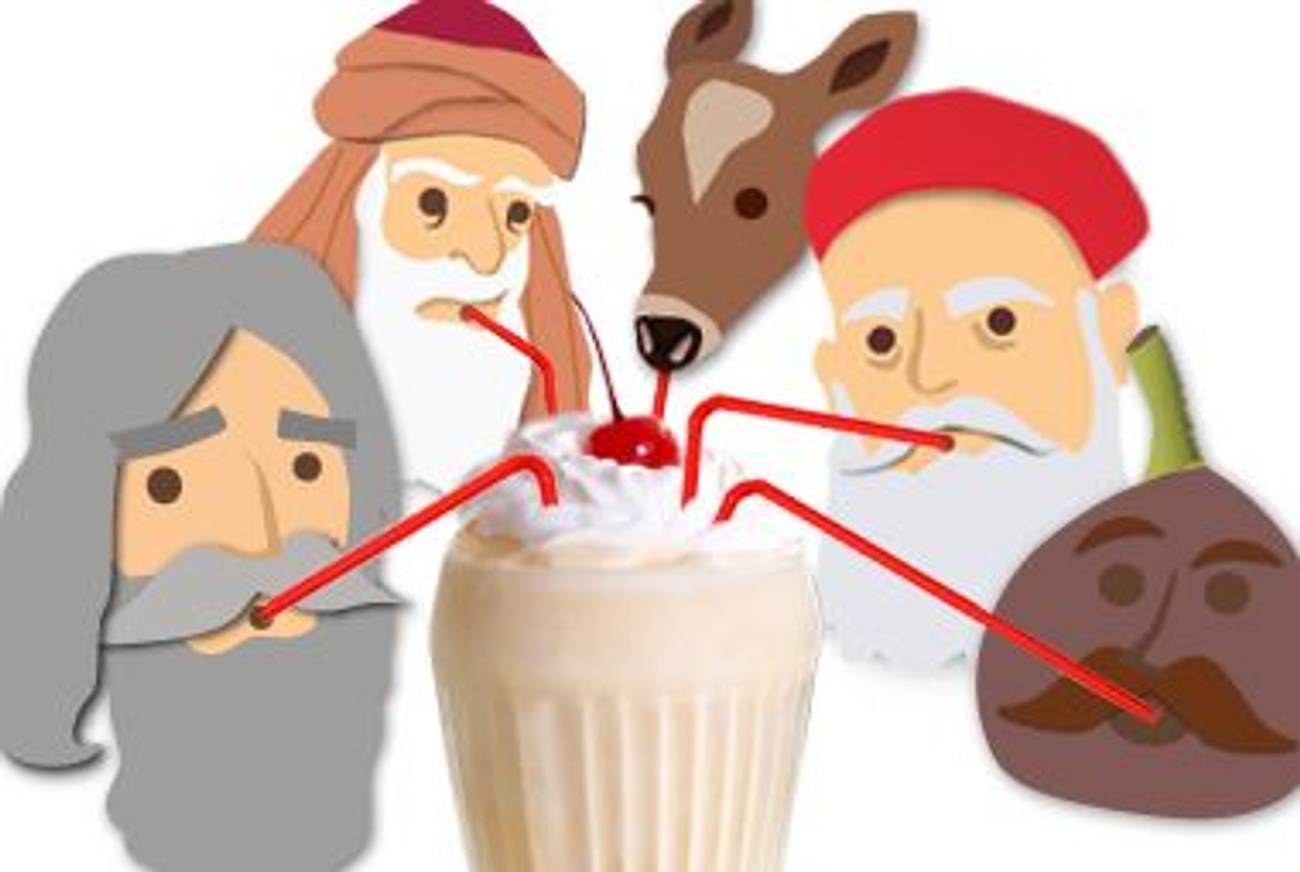Got Milk?
The complicated history of Jews and dairy




Shavuot celebrates the Israelites’ receiving the Torah, but if our forefathers were thrilled with the Word of God they were also hampered by their new dietary restrictions. Animals, the new laws made clear, had to be slaughtered in a particular way, but since the Torah was given on the Sabbath, and since the Torah forbade any work on the Sabbath, a nice roast was out of the question as the Israelites celebrated their status as God’s chosen people. With nothing else to eat, they turned to dairy, which is why it is customary to eat dairy on Shavuot.
Or is it?
Look at the Shulkhan Aruch, the famous 16th-century manual of Jewish law, and you’ll find two different answers. Rabbi Yosef Karo, the Sephardic rabbi, says nothing about eating dairy; Rabbi Moses Isserles, the Ashkenazi rabbi, does. While this may be a pure coincidence, said David Kraemer, librarian and professor of Talmud at the Jewish Theological Seminary, it also suggests that the dairy consumption was perhaps not a custom among Sephardic Jews.
And yet, there’s not much love for dairy among Ashkenazi Jews, either: Most available studies suggest that lactose intolerance, the scourge of Shavuot, disproportionately plagues Jews, regardless of their ethnicity and origin. Like other Mediterranean people, as well as Asians, an overwhelming number of Jews lack the enzyme that helps digest milk and its products. Ahskenazi Jews fare only a little bit better than their Sephardic coreligionists, but still far less well than the European peoples in whose midst they lived for centuries.
But wasn’t the Promised Land, the cradle of Jewish civilization, touted as the land of Milk and Honey? Indeed, but don’t take it too literally. Honey most likely meant date or fig honey, or the nectar flowing off any fruit. And milk, according to Kraemer, probably meant fat, as in the fat of the animals the Israelites would be blessed to have in their possession, and not necessarily milk itself.
Milk as we know it would have been rare for the ancient Israelites—without pasteurization or refrigeration, it would have gone bad. Back in the day, the Israelites most likely ate a thickened, soured milk concoction, similar to labneh, the strained yogurt still popular in the Middle East and in Middle Eastern restaurants throughout the world.
Milk itself was saved for special occasions, like, say, some angels knocking on your door. When Abraham receives the three celestial visitors in his tent, he served “some curds and milk and the calf that had been prepared.” The father of the Jewish people mixing milk and meat? Prior to receiving the Torah and its commandments, this wasn’t an issue.
Need a more mystical for the connection between Shavuot and dairy? Here goes: Moses was on Mount Sinai for 40 days. Add up the numeric value of the Hebrew letters for milk—Het, Lamed, and Bet—and you get, you guessed it, 40. Even better: The Torah, we’re told, has 70 facets, and if you add up the numeric values of the letters making up the Hebrew word for Cheese—g’vina—you get, drumroll, 70. Another name for Mount Sinai is Har Gavnunim, meaning the mountain of peaks but sharing an etymological connection with the word for cheese.
So there.
Liel Leibovitz is editor-at-large for Tablet Magazine and a host of its weekly culture podcast Unorthodox and daily Talmud podcast Take One. He is the editor of Zionism: The Tablet Guide.